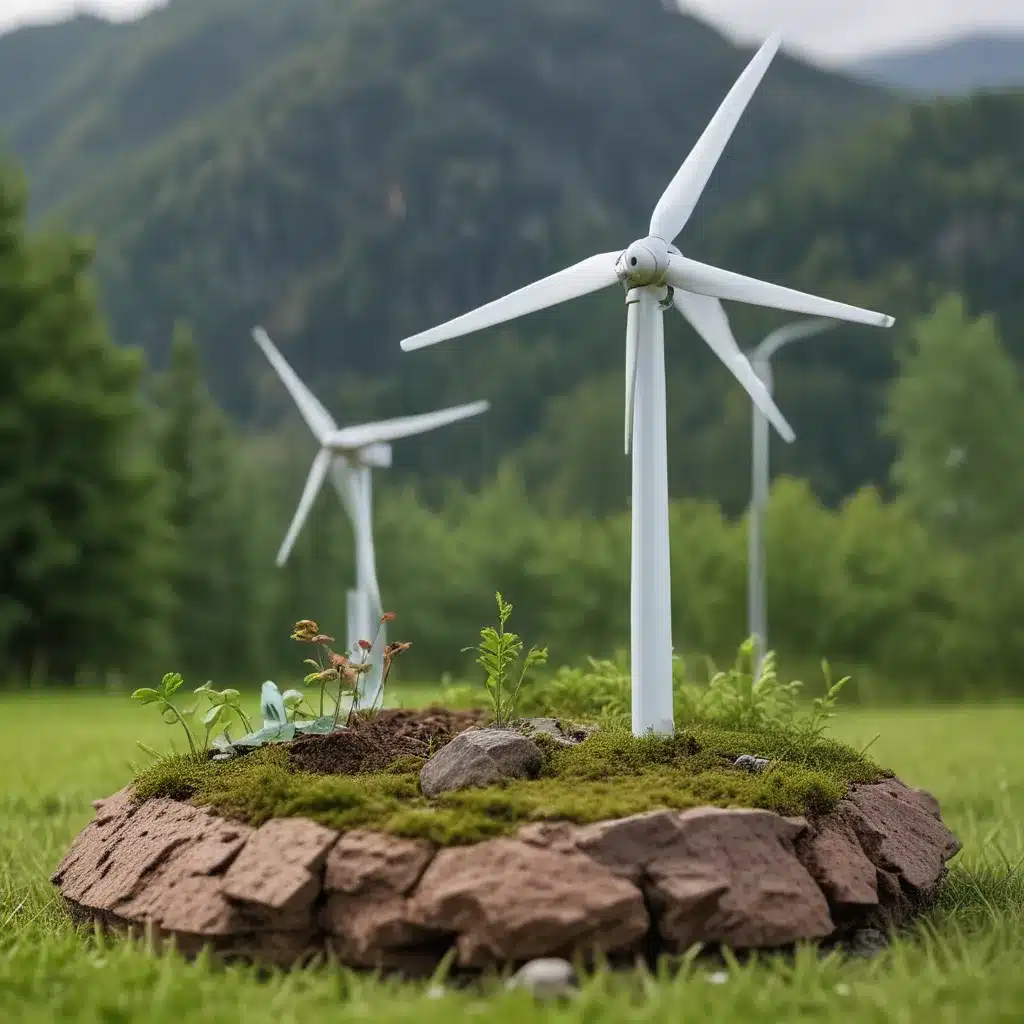
Harness the Wind and Power Your Home
As an eco-conscious homeowner in Aberdeen, UK, I’ve always been fascinated by the idea of generating my own renewable energy. After all, with our blustery coastal climate, it just seems like we’re missing out on a golden opportunity to tap into one of nature’s most abundant resources – the wind. That’s why I decided to take the plunge and install a mini wind turbine at my home. Let me tell you, it has been a game-changer!
Understanding the Basics of Small Wind Turbines
Now, I know what you might be thinking – won’t a wind turbine be an eyesore and make a ton of noise? Well, let me put those concerns to rest. The modern small wind turbines designed for residential use are actually quite compact and sleek, blending seamlessly into the landscape. And as for the noise? Trust me, you’d have a harder time hearing it over the typical Aberdeen breeze.
These mini wind turbines, typically ranging from 400 watts to 20 kilowatts, are perfectly suited for powering an average-sized home. By working with a professional installer, you can determine the ideal turbine size and tower height to meet your specific energy needs. And the best part? A well-placed, properly installed small wind turbine can provide a significant portion, if not all, of your household’s electricity requirements.
Evaluating Your Site: The Key to Success
Of course, before you go rushing out to buy a wind turbine, there are a few important factors to consider. The team at ABC Home emphasized the importance of conducting a thorough site assessment to ensure your property is well-suited for a small wind system.
First and foremost, you’ll want to analyze the wind resource in your area. The Small Wind Guidebook from the U.S. Department of Energy’s Office of Energy Efficiency & Renewable Energy is a fantastic resource for understanding wind speeds and how they can impact your system’s performance.
But it’s not just about the wind – you’ll also need to consider factors like zoning regulations, the layout of your property, and potential obstructions that could interfere with the turbine’s operation. Luckily, the experts at ABC Home can guide you through this process and help you navigate any local permitting requirements.
Maximizing Your Energy Savings
Once you’ve determined that a small wind turbine is a viable option for your home, it’s time to start crunching the numbers. The U.S. Department of Energy notes that a typical home in the UK uses around 10,649 kilowatt-hours of electricity per year. Depending on your local wind conditions, a turbine in the 5-15 kilowatt range could provide a significant portion of that power.
Of course, energy efficiency should always be your first priority. By making your home more energy-efficient through simple upgrades like LED lighting and proper insulation, you can reduce your overall energy consumption and downsize the wind turbine you need. The Energy Saver Guide from the Department of Energy has some great tips to get you started.
The Nuts and Bolts of Installation
Once you’ve got your energy efficiency plan in place and your site assessment complete, it’s time to start thinking about the nitty-gritty of installation. As I mentioned earlier, working with a professional installer is highly recommended. They can handle everything from securing the necessary permits to ensuring your turbine is properly connected to the grid.
One of the key decisions you’ll need to make is the type of tower you’ll use to support your wind turbine. There are two main options: guyed towers and self-supporting (free-standing) towers. Guyed towers are generally the more affordable choice, but they do require a bit more space to accommodate the supporting guy wires. Tilt-down towers, on the other hand, offer the convenience of easy maintenance, although they come with a higher price tag.
Ongoing Maintenance and Monitoring
Now, I know what you’re thinking – with all this talk of permits, towers, and installation, it must be a huge hassle to maintain a small wind turbine, right? Well, I’m happy to report that’s not the case at all. According to the Energy Department, with proper installation and regular maintenance, a small wind system can last up to 20 years or longer.
The key is to follow the manufacturer’s recommended maintenance schedule, which may include periodic lubrication, oil changes, and checking for any wear and tear. Many turbine manufacturers even offer service and maintenance programs to take the guesswork out of it. And let’s be honest, what’s a little routine maintenance compared to the thrill of watching your electricity meter spin backwards as you feed clean, renewable energy back into the grid?
Embracing the Power of the Wind
As I reflect on my decision to install a mini wind turbine at my home, I can’t help but feel a sense of pride and accomplishment. Not only have I taken a significant step towards reducing my carbon footprint, but I’ve also become an active participant in Aberdeen’s renewable energy revolution.
So if you’re like me and you’re tired of relying on the grid, I encourage you to explore the world of small wind turbines. It’s a journey that’s equal parts practical and empowering, and one that could have a lasting impact on your wallet and the planet. Who knows, you might just find that the wind at your back is the key to unlocking a more sustainable future.

















